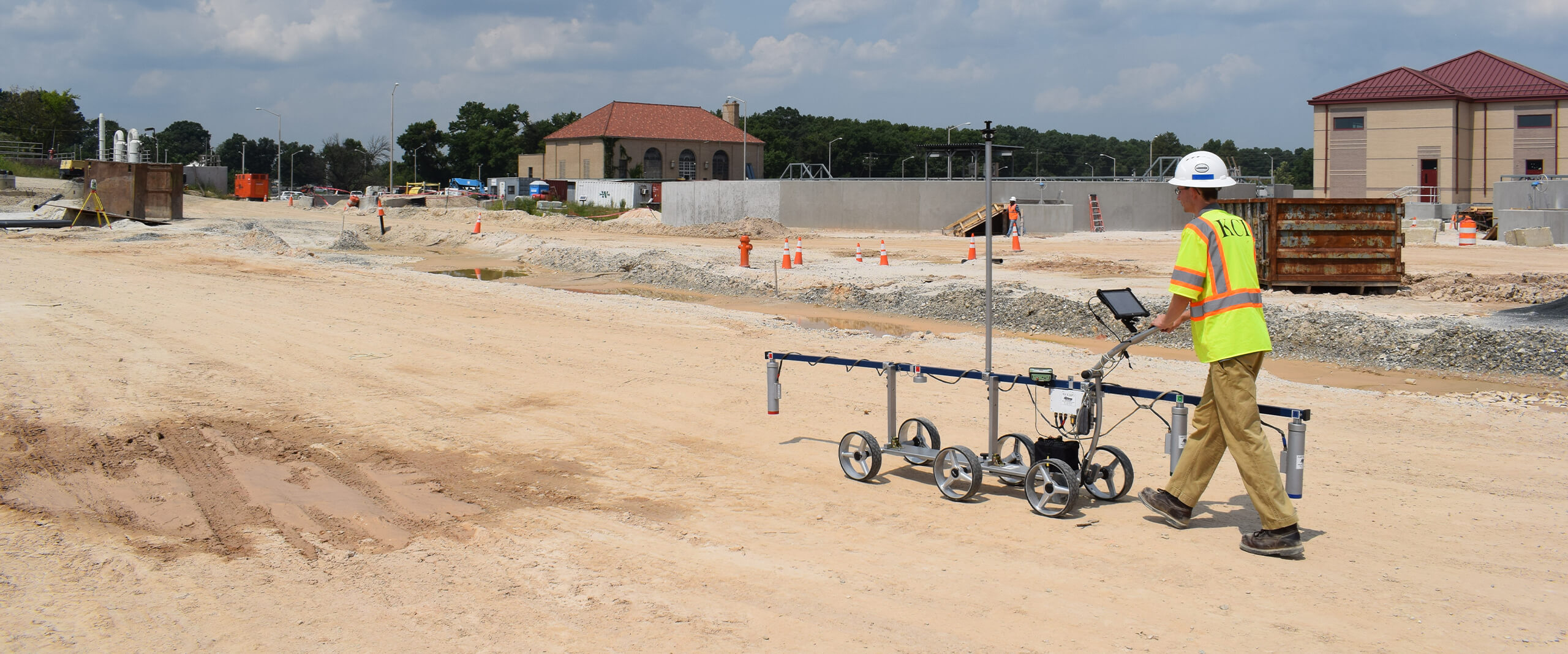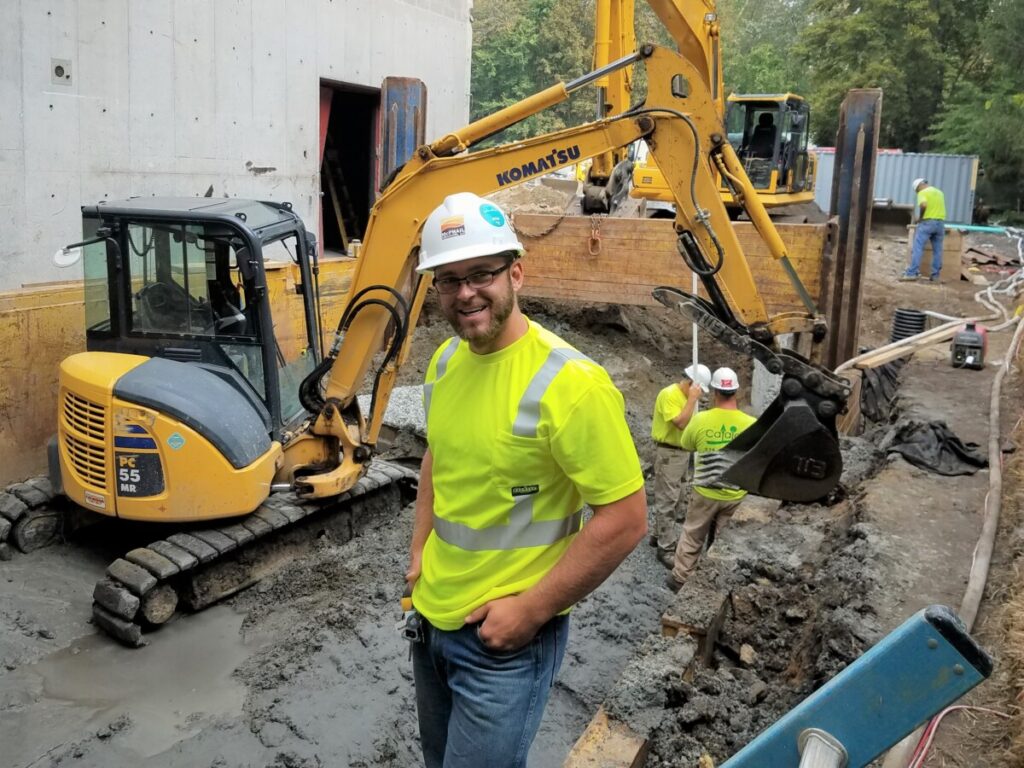A Thorough Introduction of the Key Obligations of Geotechnical Designers in Site Characterization and Ground Improvement Methods for Design Solutions
Geotechnical designers are important to the effective implementation of engineering projects, tasked with the vital responsibilities of website characterization and the application of ground improvement techniques. Their job entails a complete analysis of subsurface conditions, employing numerous screening methods to identify dirt and rock homes.
Duty of Geotechnical Designers
Geotechnical engineers play an essential duty in the style and building and construction of framework by assessing the behavior of dirt and rock below the surface area - geotechnical industry. Their obligations include reviewing subsurface problems to educate layout decisions that make certain structural stability and security. By performing in-depth evaluations of soil residential properties, including shear permeability, compressibility, and toughness, geotechnical designers supply important information that affects the option of ideal building products and strategies
Along with evaluating dirt mechanics, geotechnical designers are entrusted with determining possible dangers such as landslides, sinkholes, and ground negotiations. Their expertise helps reduce risks connected with these geotechnical sensations, thereby securing both the atmosphere and public security. They also team up carefully with various other engineering techniques, making sure that geotechnical considerations are integrated right into overall job design.
Moreover, geotechnical engineers engage in the evaluation of existing frameworks, providing suggestions for retrofitting and repairs when required. Their thorough understanding of soil-structure interaction is vital for the development of sustainable infrastructure solutions. In general, the role of geotechnical engineers is essential to the successful realization of building and construction jobs, ensuring they are risk-free, sturdy, and compliant with regulatory requirements.

Site Characterization Procedures
Efficient site characterization procedures are vital for recognizing the subsurface problems that affect job style and implementation. Geotechnical engineers employ a methodical strategy to collect, review, and translate information concerning dirt, rock, and groundwater attributes. This process starts with a complete evaluation of existing literary works and archaeological site data, giving understandings into previous site conditions and prospective challenges.

Information evaluation adheres to fieldwork, where engineers make use of geostatistical methods to translate searchings for and produce geological models. With persistent website characterization, geotechnical engineers lay the groundwork for effective project execution, minimizing unexpected difficulties and optimizing source allocation.
Dirt and Rock Screening Methods
While comprehending subsurface problems is crucial, the choice of appropriate soil and rock testing approaches is equally vital for exact analysis and design. Geotechnical designers use a variety of screening methods to review the mechanical and physical homes of soil and rock materials.
Laboratory tests, such as Atterberg limits, grain size evaluation, geotechnical industry and unconfined compressive stamina tests, offer necessary information on soil behavior under different dampness conditions and filling circumstances. These tests assist figure out dirt classification and predict settlement or shear stamina features critical for foundation design.
In-situ testing techniques, including Standard Penetration Examinations (SPT), Cone Infiltration Tests (CPT), and stress meter examinations, allow designers to collect information directly from the ground. These approaches supply useful understandings into the dirt's density, uniformity, and stratification without the need for considerable sampling.
Rock testing typically entails core sampling and lab analysis to assess residential properties like uniaxial compressive strength and rock top quality designation (RQD) Together, these soil and rock screening methods allow geotechnical engineers to make educated decisions concerning site-specific difficulties, ensuring the safety and security of design services.
Ground Renovation Techniques
Ground renovation strategies are important for enhancing the engineering residential or commercial properties of soil, consequently boosting its load-bearing ability and decreasing negotiation. These approaches are essential in attending to difficulties presented by weak or troublesome dirts, which can substantially influence the security and sturdiness of frameworks.
Numerous ground improvement techniques are employed, including compaction, grouting, and soil stabilization. Compaction involves increasing the density of soil with mechanical methods, which boosts its shear toughness and reduces compressibility. Grouting, on the other hand, involves injecting a fluid material into the ground to fill up spaces and improve dirt communication. This strategy is specifically reliable for dealing with loosened sands or broken rock.
Dirt stabilization includes a series of approaches, from chemical additives to mechanical treatments, focused on enhancing the soil's resistance to disintegration and contortion. Techniques such as lime stablizing or cement blending alter the residential or commercial properties of the soil at a particle level, enhancing its overall efficiency.
Value of Geotechnical Analyses
Geotechnical assessments play a critical duty in the preparation and design of design projects, as they give necessary info concerning the subsurface problems. Comprehending soil properties, rock developments, groundwater levels, and possible geohazards is vital for making certain the stability and security of structures. These analyses enable designers to make informed decisions pertaining to site choice, design specifications, and building and construction approaches.
The relevance of geotechnical assessments expands past preliminary task phases; they contribute in threat management and expense performance. By identifying prospective concerns early, such as dirt settlement, slope instability, or too much groundwater, designers can develop proper reduction techniques, lowering the likelihood of expensive hold-ups and architectural failures. These evaluations sustain compliance with governing requirements and boost the sustainability of engineering techniques.

Final Thought
Finally, geotechnical designers are vital to making sure the safety and stability of design projects with comprehensive site characterization and ground renovation techniques. civil consulting engineers. Their methodical strategy to evaluating subsurface problems, incorporated with their recommendations for efficient ground alteration, considerably improves dirt residential properties and load-bearing capacity. The know-how of geotechnical designers not only assists in enlightened project planning yet additionally makes sure conformity with policies and cultivates effective interaction among stakeholders, eventually adding to successful engineering outcomes
Geotechnical designers play an essential function in the design and construction of infrastructure by analyzing the actions of dirt and rock beneath the surface. By conducting comprehensive analyses of soil buildings, including shear toughness, leaks in the structure, and compressibility, geotechnical engineers provide crucial data that influences the option of ideal building and construction products and methods.
In addition to evaluating soil mechanics, geotechnical designers are entrusted with recognizing prospective risks such as landslides, sinkholes, and ground settlements. Geotechnical designers employ a systematic strategy to collect, assess, and interpret information relating to groundwater, dirt, and rock qualities. By identifying possible problems early, such as soil negotiation, slope instability, or excessive groundwater, designers can develop appropriate reduction techniques, reducing the probability of expensive delays and architectural failings.
Comments on “Discovering the Conveniences of Geo Tech Engineering for Urban Planning”